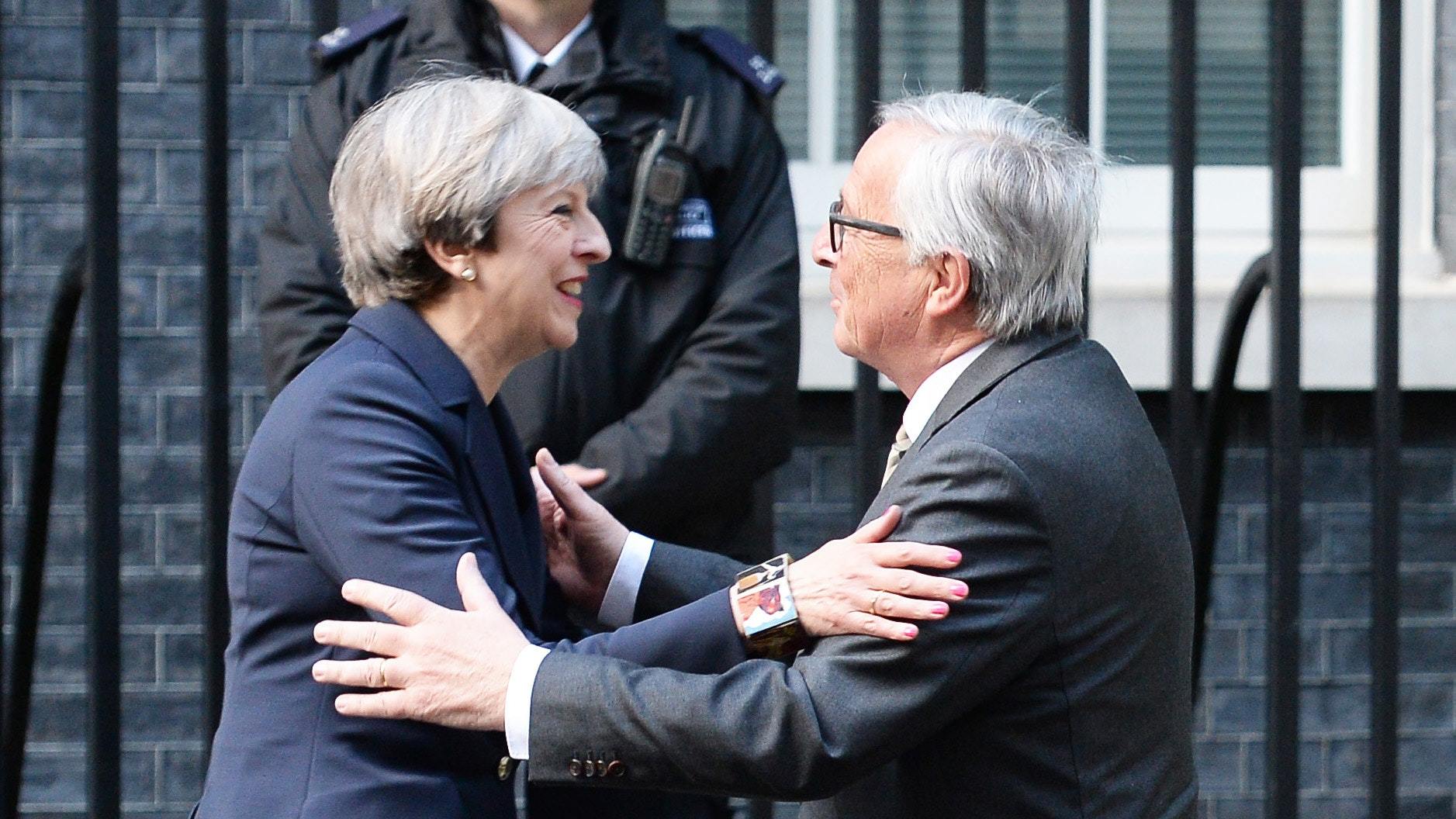
THE UK will come to regret its decision to leave the European Union, Brussels’ top official has claimed.
European Commission president Jean-Claude Juncker said things “cannot remain as they are” for the UK in its relationship with the EU after leaving the bloc.
Addressing the European Parliament, Mr Juncker was cheered by Eurosceptic MEPs as he noted the UK’s departure was due on March 29 2019.
Responding to their applause, Mr Juncker said the time would come “when you will regret your decision”.
President @JunckerEU and @MichelBarnier are in the #EPlenary to discuss the guidelines on the framework of future EU-UK relations #Brexit https://t.co/uOcKQTsv3Q
— European Commission ?? (@EU_Commission) March 13, 2018
In a message to Theresa May – who had hoped her Mansion House speech had provided further information on her plans – Mr Juncker said the EU needed “more clarity on how the UK sees its future relationship”.
And he insisted the EU was united over the issue of the Irish border, one of the main issues in the negotiation.
Mr Juncker said “cherry-picking is not going to be possible” in the future trade relationship between the UK and EU.
“I would rather have preferred Britain not to have decided to leave the European Union, but anyone who leaves the European Union has to know, frankly, what this means,” he said.
“If you decide to jettison, leave behind, the common agreements and rules, then you have to accept that things cannot remain as they are.”
The European Parliament plays a crucial role in the ongoing #Brexit negotiations. Watch our video to find out how and tune in for the plenary debate on EU-UK future relations today at 9am CET. pic.twitter.com/z0PDCGsXIh
— European Parliament (@Europarl_EN) March 13, 2018
Mr Juncker said the controversial “backstop” proposal for dealing with the border between Northern Ireland and the Republic “translates faithfully” the agreement reached between Mrs May and the EU in December.
He said the EU was ready to work with the UK on its preferred option of the border issue being resolved in the future trade deal, or by other specific measures.
But he added “we need to receive concrete proposals from the UK first”.
Mr Juncker said: “The 27 member states stand firm and united when it comes to Ireland. For us this is not an Irish issue, it is a European issue.”
But he was heckled by one MEP who shouted “it is a British issue”.
The European Parliament’s Brexit co-ordinator Guy Verhofstadt also called for more details from the Prime Minister.
He said: “There was this Mansion House speech by Mrs May, but it was mainly repeating the red lines that we know already.”
The Prime Minister had said “we cannot accept the rights of Canada and then the obligations of Norway” but “I don’t think that we have ever presented that proposal to the UK side”, Mr Verhofstadt said.
“I think the UK side have to understand that the opposite is also not possible – you cannot have the rights of Norway and then the obligations of Canada.”
On #Brexit, it’s time to go beyond slogans & sound bites, from all sides. That’s what we do in this resolution. We present an architecture, a concept, a vision for the future, a plan that matches the red lines of the UK w/ the principles on which the EU has been built #EPlenary
— Guy Verhofstadt (@guyverhofstadt) March 13, 2018
Mr Verhofstadt said it was time to move beyond “slogans” and “soundbites”.
He has put forward a motion to the European Parliament for an “association agreement” to deal with the future UK-EU relationship.
But it insists on a “binding interpretation role” for the European Court of Justice (CJEU) and rejects UK efforts to “cherry-pick” single market access for particular sectors, such as the financial services industry.

Enjoy the convenience of having The Sunday Post delivered as a digital ePaper straight to your smartphone, tablet or computer.
Subscribe for only £5.49 a month and enjoy all the benefits of the printed paper as a digital replica.
Subscribe